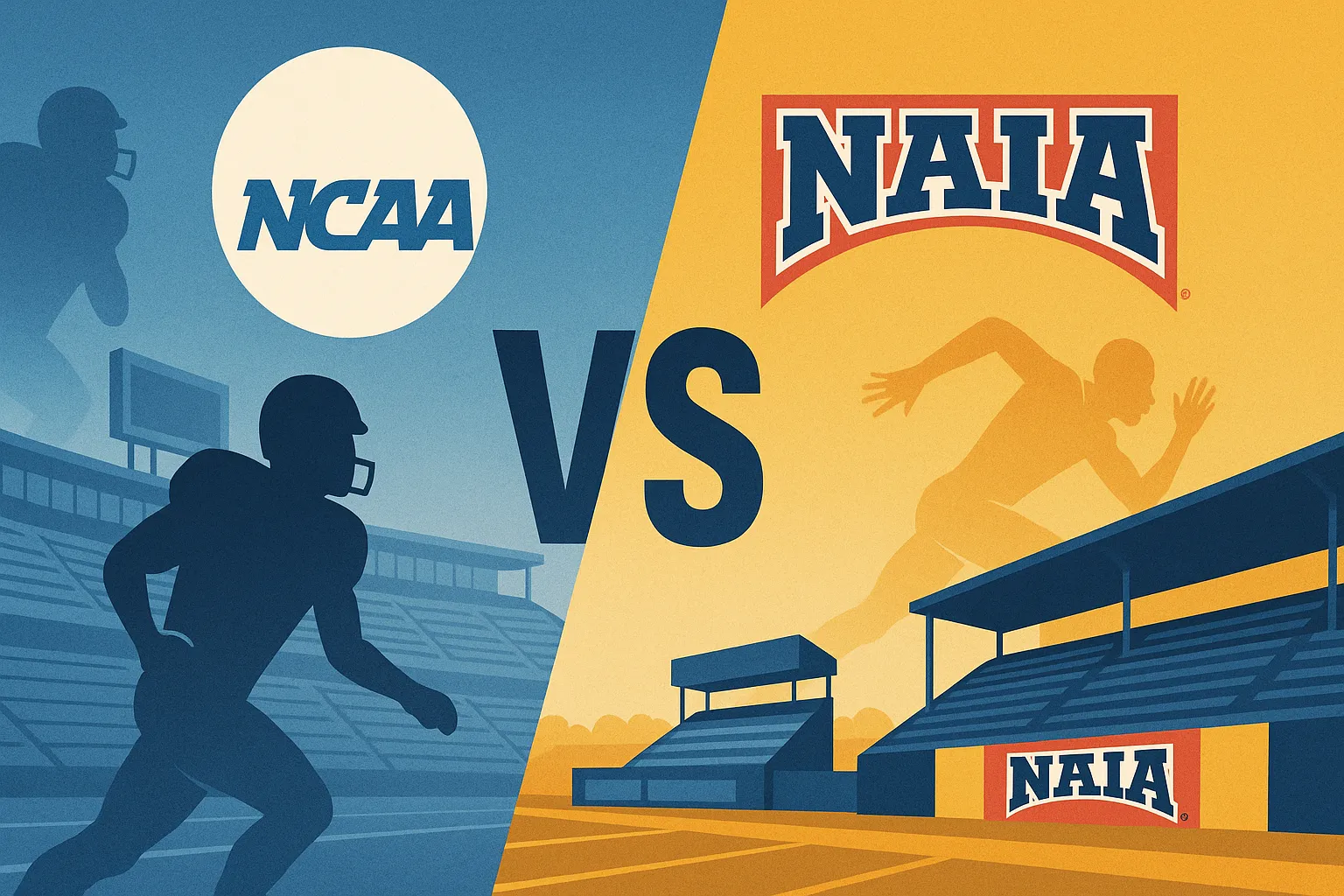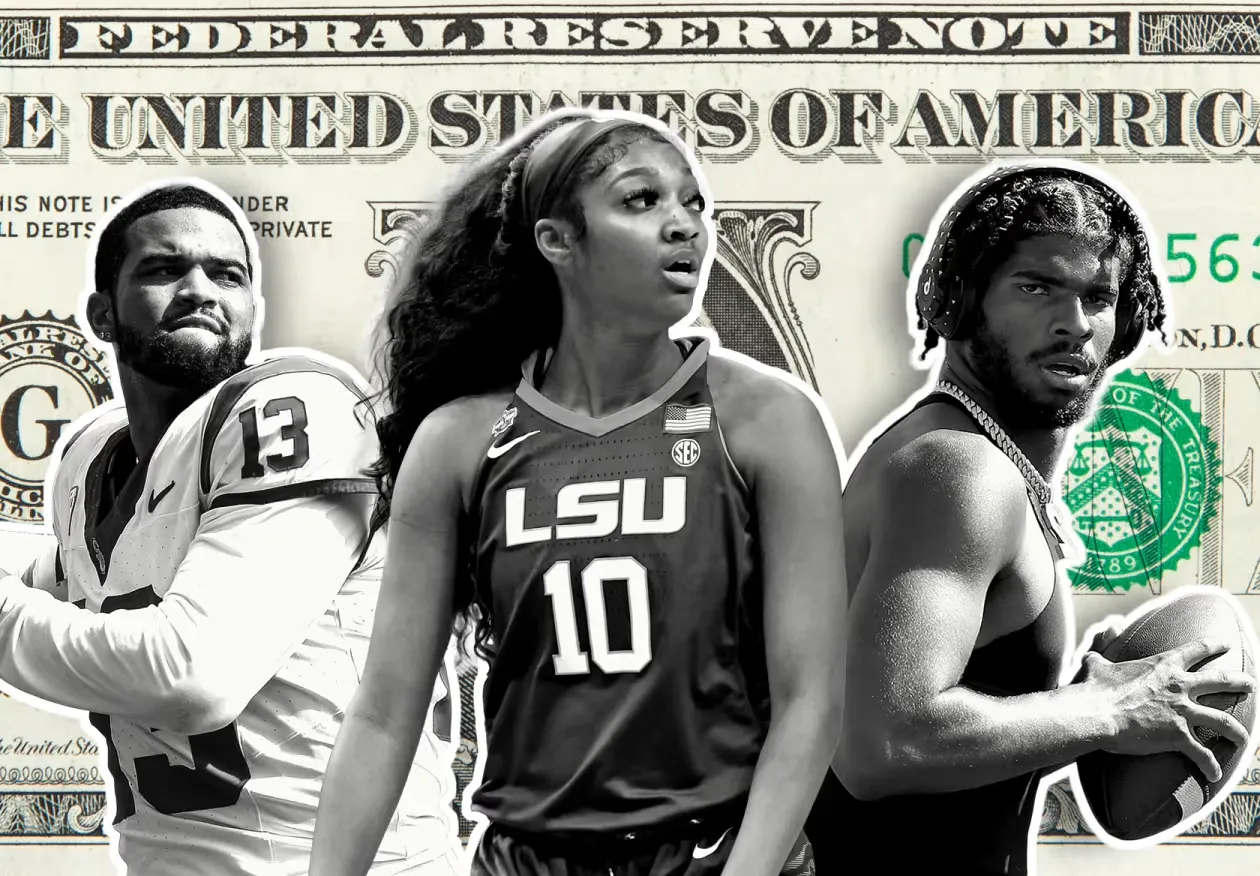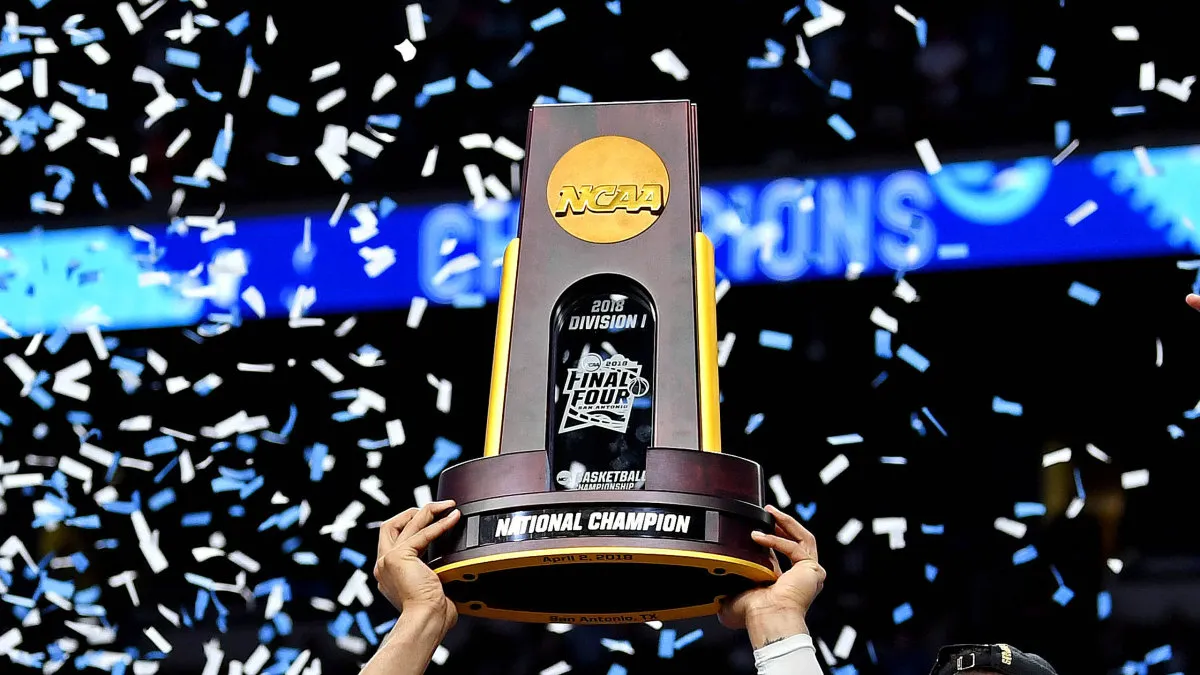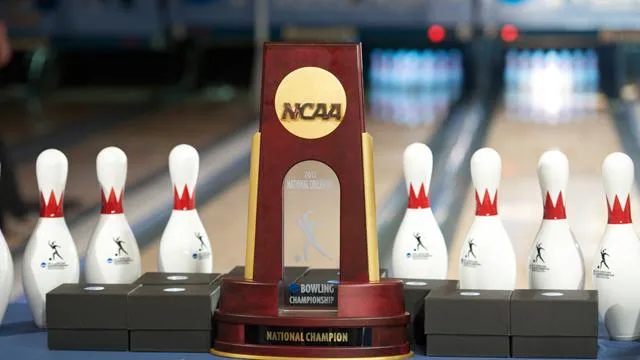NAIA vs NCAA: Understanding Their Key Differences and Opportunities
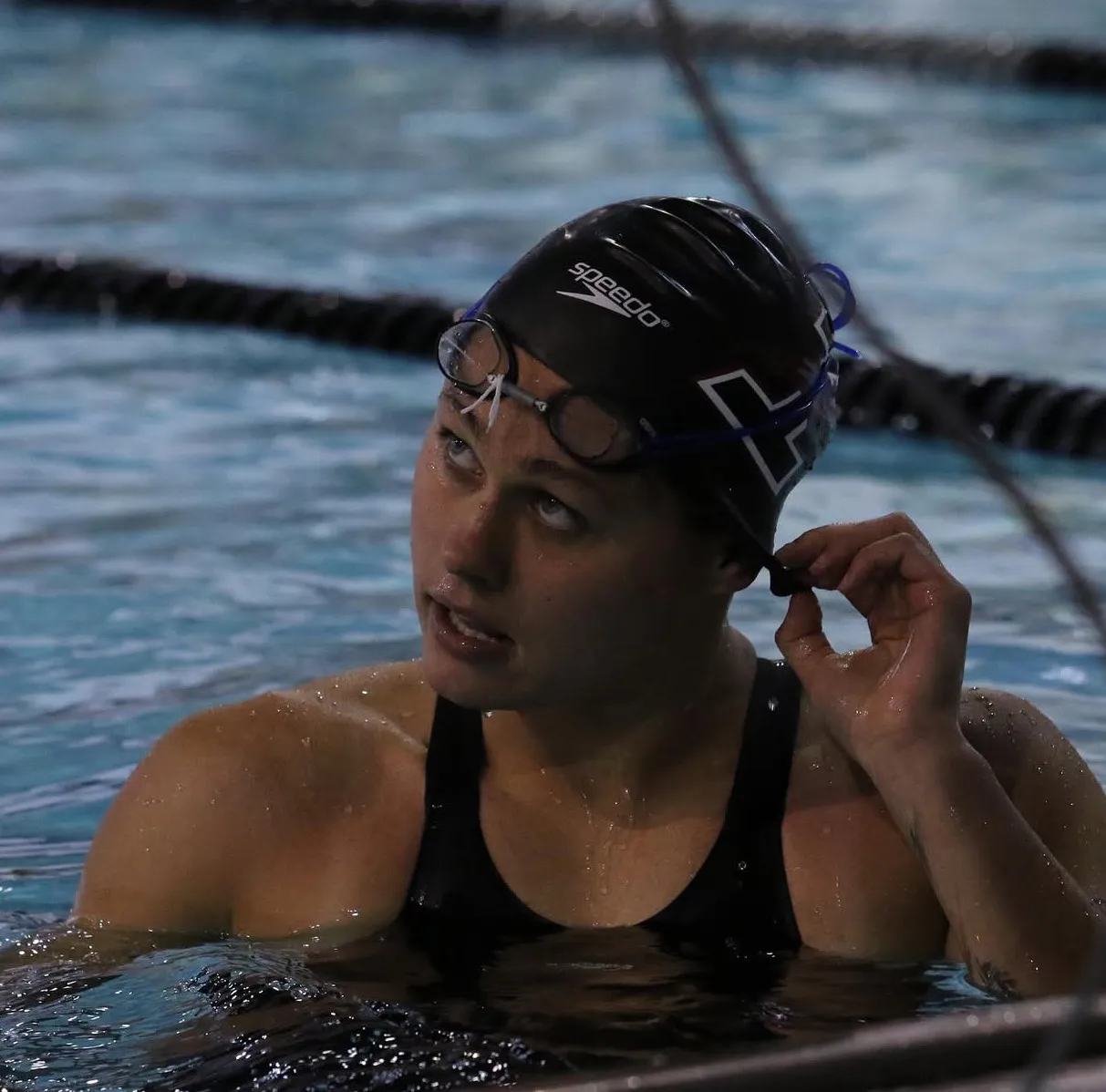
Maria Rezhylo
All-American swimmer & swim coach
Introduction
Every year, thousands of families face a crucial decision: whether their student-athlete should pursue NAIAorNCAA college sports.
With over 8 million US high school athletes competing for athletic scholarships, understanding all accessible pathways for young athletes can mean the difference between crushing debt and an affordable education that launches a lifetime of success.
This isn't just about choosing a college—it's about finding where an athlete will thrive academically, compete meaningfully, and graduate with minimal debt.
Whether your family dreams of Division I glory or values the balanced approach of smaller programs, this guide reveals the truth behind scholarships, eligibility, and real costs using data from both associations.
Intercollegiate Athletics Landscape
The world of intercollegiate athletics has undergone significant changes since the NCAA's founding in 1906 and the NAIA's establishment in 1937. Today, we see clear paths that cater to different groups of athletes.
NCAA Overview
TheNational Collegiate Athletic Association (NCAA)is the largest governing body for college athletics in the United States.
It supports approximately 500,000 student-athletes across three divisions—Division I (DI), Division II (DII), and Division III (DIII).

NCAA programs range from large universities with significant athletic budgets and widespread media coverage (particularly in Division I) to smaller, academically focused institutions primarily found in Division III.
NCAA Eligibility Center & Requirements
NCAA Division I and II require certification through the NCAA Eligibility Centerbefore athletes can receive scholarships or participate in competition.
📚 Core Course Requirements:
- 16 specific high school courses must be completed:
- 4 English, 3 Math, 2 Science, 1 additional in English/Math/Science
- 2 Social Studies, four additional from the above areas, or a foreign language
- Courses must be NCAA-approved by your high school
- GPA Requirements: 2.3 in core courses (DI), 2.2 in core courses (DII)
- No standardized test requirement (eliminated in 2023)
NAIA Overview
TheNational Association of Intercollegiate Athletics (NAIA)serves about 77,000 athletes and includes around 250 institutions, predominantly small, private colleges.

Many NAIA schools have faith-based affiliations and emphasize character development, community service, and balanced collegiate experiences.
NAIA Eligibility Center & Requirements
The NAIA Eligibility Center (PlayNAIA) offers more accessible pathways to NAIA eligibility:
🎓 Automatic Eligibility: Graduate from high school with a 2.3+ cumulative GPA
📊 Flexible Alternative: Meet 2 of 3 criteria:
- 2.0+ cumulative GPA
- Top 50% class rank
- 18+ ACT or 970+ SAT
NAIA vs NCAA Eligibility Requirements Side-by-Side 📋
Compare requirements across all divisions to find where you qualify.
| Requirement Category | NCAA DI | NCAA DII | NAIA |
|---|---|---|---|
| Initial Academic Standards | |||
| High School Core Courses | 16 specific courses required | 16 specific courses required | No specific course requirements |
| Minimum GPA | 2.3 in core courses | 2.2 in core courses | 2.3 overall OR 2-of-3 alternative |
| Standardized Tests | Not required (since 2023) | Not required (since 2023) | Optional for alternative pathway |
| Ongoing Academic Progress | |||
| Annual Credit Hours | 24 credits + degree progress % | 24 credits annually | 24 credits annually |
| Transfer Eligibility | One-time immediate transfer | One-time immediate transfer | Immediate eligibility (2023+) |
Athletic Scholarships — How Funding Works in College Sports
Here's what most families don't realize: only 1% of college athletes receive full scholarships.
The rest navigate a complex world of partial funding, academic aid, and strategic "stacking" that can make or break your family's finances.
NCAA Division I operates two scholarship models:
- Head-count sports = Full scholarships only (FBS football, men's/women's basketball, women's volleyball, women's tennis, women's gymnastics)
- Equivalency sports = Partial scholarships divided among team members (baseball, soccer, most others)
NAIA Scholarships
Operates all sports as equivalency with generally smaller limits than NCAA DI/DII, but offers more flexible aid stacking rules.
🔗 Academic Stacking Benefits:
- 3.6+ GPA Students: All aid is exempt from team scholarship limits
- 3.3-3.59 GPA Students: Half of aid exempt from limits
- Strategic Result: Coaches can effectively exceed official scholarship limits for good students
Scholarship Limits: Comparison Table by Sport 📈
| Sport | NCAA DI | NCAA DII | NAIA | Notes |
|---|---|---|---|---|
| Men's Sports | ||||
| Football | 85 (FBS) / 63 (FCS) | 36 | 24 | DI FBS only head-count sport |
| Basketball | 13 (head-count) | 10 | 8 | DI = full rides only |
| Baseball | 11.7 (max 27 players) | 9.0 | 12 | All equivalency |
| Soccer | 9.9 | 9.0 | 12 | NAIA allows more |
| Women's Sports | ||||
| Basketball | 15 (head-count) | 10 | 8 | DI = full rides only |
| Volleyball | 12 (head-count) | 8.0 | 8 | DI = full rides only |
| Soccer | 14.0 | 9.9 | 12 | DI most generous |
💡 Strategic Insight: NAIA often offers more scholarships than NCAA DII in popular team and individual sports like soccer, golf, and volleyball, potentially meaning better funding opportunities for individual athletes.
NAIA vs NCAA at a Glance: Quick Decision Framework 🎯
Stop choosing based on assumptions. Here's how to identify which path actually fits your athlete who wants to play college sports:
Choose NCAA Division I if you're an athlete who:
✅ Competes at elite national/international levels
✅ Dreams of professional sports as primary goal
✅ Thrives under intense pressure and media attention
✅ Can manage 30-40+ hours weekly athletic commitment
✅ Values exposure and networking from high-profile NCAA programs

Choose NCAA Division II if your athlete:
✅ Wants serious competitive athletics with academic balance
✅ Prefers regional competition and moderate travel
✅ Seeks partial scholarships with structured support
✅ Can handle 20-30 hours weekly athletic commitment
✅ Values the "sweet spot" between athletics and college life

Choose NCAA Division III if your athlete:
✅ Prioritizes academics above athletic achievement
✅ Wants an authentic college experience without scholarship pressure
✅ Values integration with the general student body
✅ Can secure strong academic/need-based financial aid
✅ Seeks shortest seasons and maximum academic flexibility

Choose NAIA if you're an athlete who:
✅ Seeks competitive athletics with academic/life balance
✅ Values close coach-athlete relationships and personal attention
✅ Needs late recruiting opportunities
✅ Benefits from generous academic aid stacking (3.6+ GPA)
✅ Wants to play immediately rather than develop behind elite recruits

Professional Pathway Realities 🏆
NCAA Division I Professional Pipeline:
- Clear pathway to major professional sports for top American sporting talents
- 1.2% of DI basketball players reach the NBA
- Extensive scout presence and media exposure
- The majority of NFL/MLB/WNBA players from elite NCAA Division I programs
NAIA Professional Potential:
- 2-3 MLB draft picks annually (Tucker Musgrove, Hector Garcia in 2023)
- Strong international soccer professional placement
- Olympic qualifiers in track and field regularly
- European basketball leagues for All-Americans
🎯 Reality Check: Elite athletic ability gets noticed regardless of division. Performance standards in individual sports (such as track times and golf scores) matter more than school size. However, team sport professional opportunities heavily favor NCAA Division I due to the concentration of scouts and media coverage.
Frequently Asked Questions
Is NAIA a lower level than NCAA?
Competition quality varieswithin each association. Top NAIA programs often meet NCAA Division II standards, with some sports rivaling those of Division I. The "lower level" myth ignores significant overlap in talent and performance.
Can you easily transfer between NAIA and NCAA?
Yes, athletes transfer in both directions regularly. Recent rule changes have simplified the process, particularly for transfers from NAIA to NCAA. Many NAIA standouts successfully move to Division I programs.
Do NAIA athletes receive adequate academic support compared to NCAA athletes?
Support differs in approach—NAIA emphasizes personal attention through small classes and direct relationships with professors, while NCAA provides specialized athletic academic services. Both can be effective for different learning styles.
How do graduation rates compare across associations?
NCAA Division I (91%), Division II (77%), with NAIA athletes typically graduating at rates similar to those of their institution's general population, often higher due to the athletic structure and accountability.
Next Steps: Your Strategic Action Plan 🎯
Choosing between NAIA vs NCAA schools requires an honest evaluation of your athlete's competitive level, academic profile, financial needs, and personal goals.
The right college sports division depends on individual circumstances, not assumptions about prestige or hierarchy.
- Assess Realistically: Evaluate competitive level against current college rosters and determine if your results are athletic scholarship-worthy performance
- Calculate True Costs: Compare net prices after ALL aid types from any university offering college sports
- Consider Lifestyle: Determine preferred athletics/academics/social balance across sports programs
- Plan for Flexibility: Transfers are possible, and choices aren't always permanent in college athletics
The right path exists for every dedicated student-athlete—your mission is to discover where they'll thrive academically, compete meaningfully, and graduate prepared for lifelong success.
Make the strategic choice based on facts, not assumptions. 🚀
